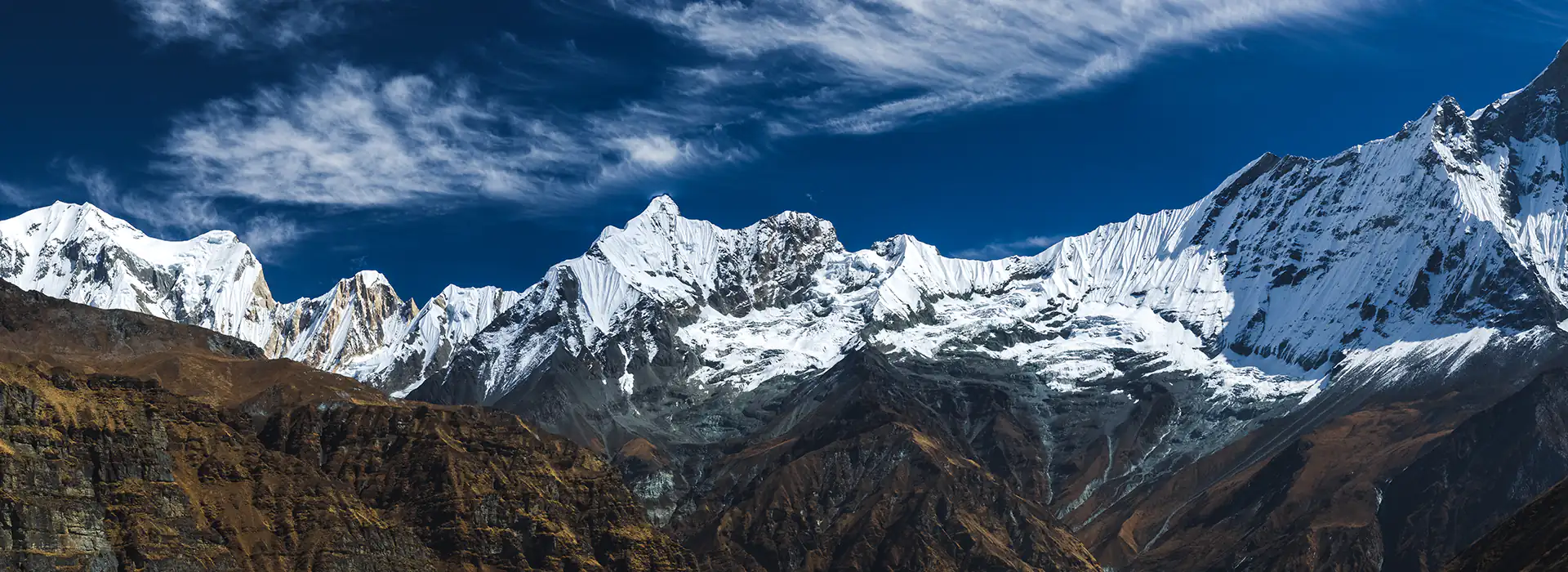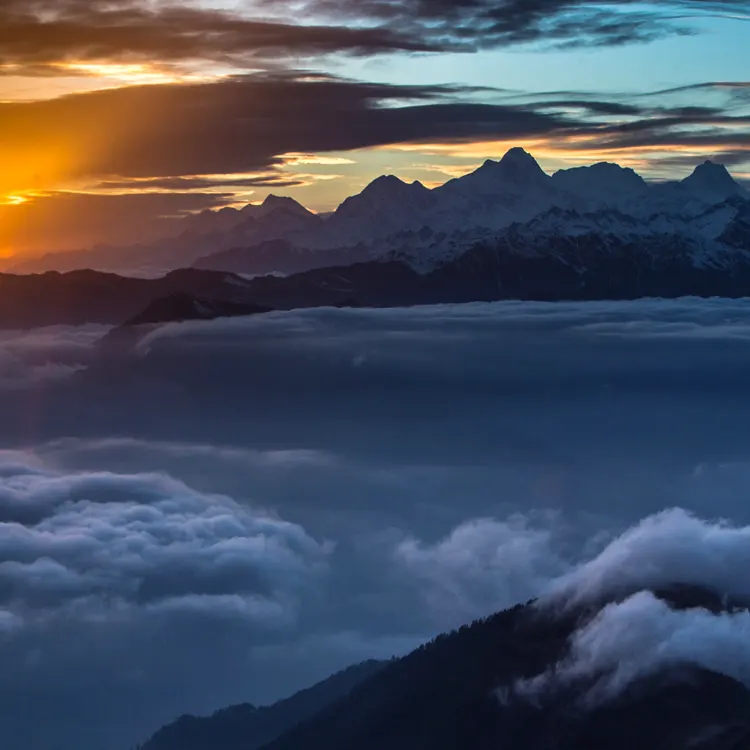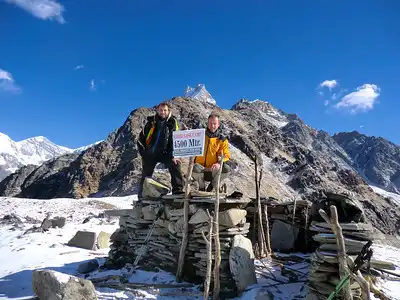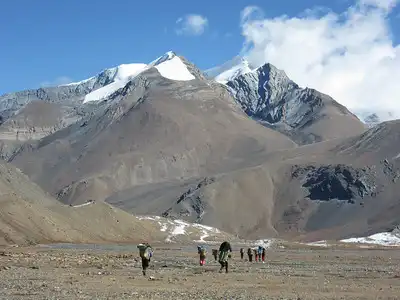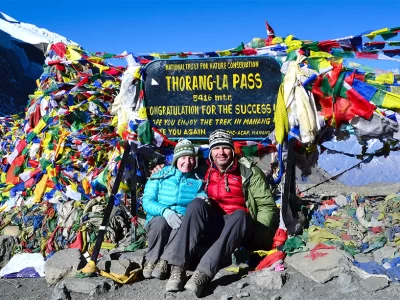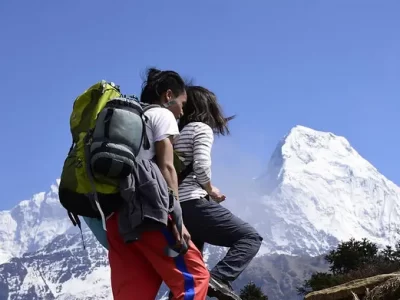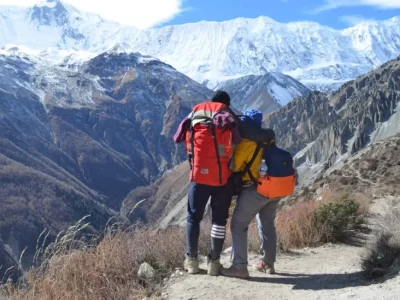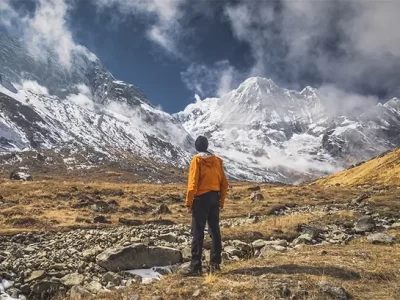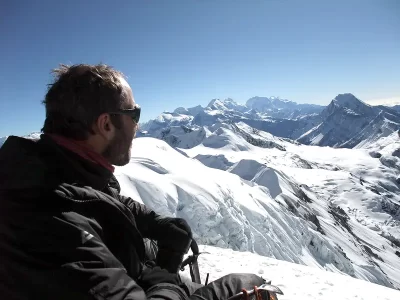The Annapurna Region offers a spectacular mountaineering adventure in Nepal’s mid-north. From the low lush valleys to the summits of the immense white faces of the Himalayas, such as Annapurna, Manaslu, Nilgiri, Dhaulagiri, and Himchuli, everything emerges to be divine here. Massive rivers like Marshyangdi and Dudh Koshi, as well as heavenly streams, surround the Annapurna region, further enhancing its grandeur. Likewise, the entire background of the Annapurna Region has a historic essence in addition to the glorious traditions and culture of the inhabitants. The hamlet in the Annapurna Region is awash in a fantastic tone and offers a breathtaking view of Central Nepal’s Himalayas and landscapes.
Annapurna Region Packages
Tilicho Lake Trek
Mardi Himal Trek
Dhaulagiri Trek
Mini Annapurna Circuit Trek
Ghorepani Poon Hill Trek
Annapurna Circuit Trek
Annapurna Base Camp Trek
Chulu Far East Peak Climbing
An alluring aspect of the Annapurna Region
The Midwestern region of Nepal is quite diverse and has great natural features. This region is home to the tenth and seventh-highest mountains in the world- Annapurna and Dhaulagiri. The serenity trail that meanders through the Gurung communities will take you to these mountains. The walk route extends through the Annapurna Conservation Area, which boasts splendid views of the alpine fauna and greenery. Under the majestic mountains of the northern region, the Gurung and Sherpa people inhabit the entire southern region of the Annapurna Region. Similarly, the trail from the northwestern side of Manang leads to Tilicho Lake, one of the world’s highest lakes.
Furthermore, the monasteries and historical sites, like Muktinath, offer trekkers a decent atmosphere when they are trekking in the Annapurna region. In particular, there are several sights to visit, including the “Kali Gandaki,” the world’s deepest George, which extends down to the surface core and is beset by umpteen valleys. Also, when trekking well over trials of the Annapurna Region, you will encounter the Manaslu region. A portion of the expedition links the Manaslu and Annapurna regions, requiring you to trek up to the Thorong La Pass and the Manang settlements. Being able to gaze upon the glaciers, lakes, and Muktinath’s north side will be exquisite. The Rhododendron wave stretches beneath the majestic pine trees that encircle the gorges and slopes of this region. Along with the suspenseful “Annapurna Circuit Trek,” this region is also home to several more mountaineering endeavors.
Essential Permits to Trek in Annapurna Region
To trek in the Annapurna region, a few permits are vital. On the other hand, you won’t have to worry about this if you trek with any tour operator. However, if you are trekking independently, knowing more about these permits could help you traverse the Annapurna region smoothly.
Annapurna Conservation Area Permit (ACAP)
The Annapurna Conservation Area extends from Lamjung to Manang. It is also one of Nepal’s largest conservation areas, where exotic animals and foliage appear. The permit fee directly contributes to the advancement of this conservation area. Also, this conservation area is one of the primary attractions of Western Nepal. The locals from this region also earn revenue from this. Nevertheless, trekkers can enter through the Annapurna Conservation Area with an ACAP permit.
Cost Details of ACAP Permit
For Foreigners: USD 30
For SAARC Nationals: USD 20
Trekkers Information Management System (TIMS)
One of Nepal’s crucial permits for trekking is the Trekker Information Management System (TIMS). This permit specifies the trekker’s details and guarantees their safety when trekking in Nepal’s Himalayan region. The TIMS permit is simple to get from Nepal Tourism Board, either in Pokhara or Kathmandu.
Cost Details of TIMS permit
TIMS Permit: USD 10
Best Season
Trekking in the Annapurna Region is quite enjoyable, but it will be even more so if one can choose the optimal season to explore the Annapurna Region. Trekking in the Annapurna Region is generally always doable. However, it is preferable to determine the preferable period to raise your degree of satisfaction. The spring and autumn seasons attract many visitors to the Annapurna Region. The entire viewpoint of this region becomes evident at this time. The foliage, dazzling flowers, and pleasant atmosphere with no rain or fog make visiting Annapurna during the spring and autumn seasons worthwhile. Most of the festival also takes place during these two seasons of the year.
Furthermore, the trek will be pleasant because of the moderate weather during the spring and autumn seasons. There is a high risk of landslides and floods during monsoon season due to the heavy rains that make the terrain slick. Similar circumstances arise during the winter when the dense snow can make an expedition to the Annapurna Region impossible. As a result, the optimum months for trekking in the Annapurna region will be September through November and March through May. Similarly, one can witness the several festivities that will take place in this region during the autumn. Similarly, the expedition in the Annapurna Region is fulfilling throughout the autumn and spring seasons. Due to the flora’s lovely shining foliage and the fantastic atmosphere’s beautiful aura, this region offers its best during these two seasons.
Weather and Climate
The Annapurna region’s weather changes continuously throughout the year. The region receives sufficient amounts of snow and rain throughout the year, yet the temperature will still be reasonable. The temperature peaks during the day at roughly 15 degrees Celsius and falls to 2 degrees Celsius at night. Along with it are the hills and clouds that surround the Himalayas. Consequently, it will be essential to forecast the weather before heading to the Annapurna Region.
Tribes residing in the Annapurna Region
Most of the inhabitants of the Annapurna Region are of the Gurung, Sherpa, and Tibetan ethnicities. These individuals often commemorate festivals such as Lohsar, Ubhauli, Dashain Tihar, and one of the major festivals, “Tilije.” The majority of the population of this region depends on agriculture, livestock farming, tourism, and other business sectors. There are several monasteries and temples, many of which depict significant historical events involving these folk deities. There are many followers of Buddhism in the Annapurna Region. The ambiance appears more spiritual because of the profound tranquility surrounding the monasteries and the innumerable prayer flags. More typically, these people’s homes are still set up in an antique manner using mud, stones, and wood. The majority of the inhabitants of the Annapurna Region are kind and modest.
